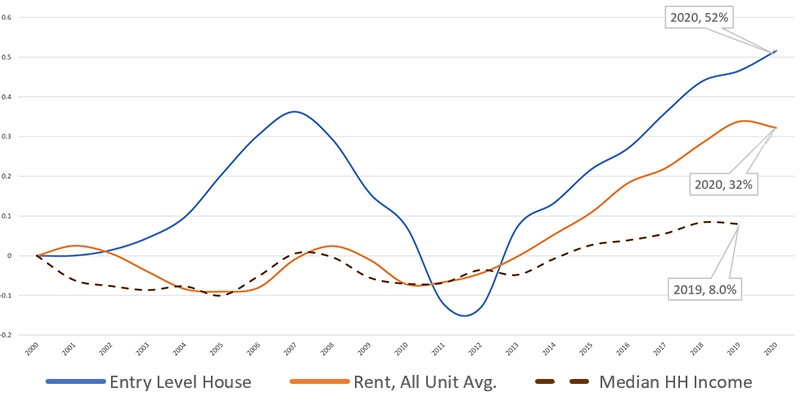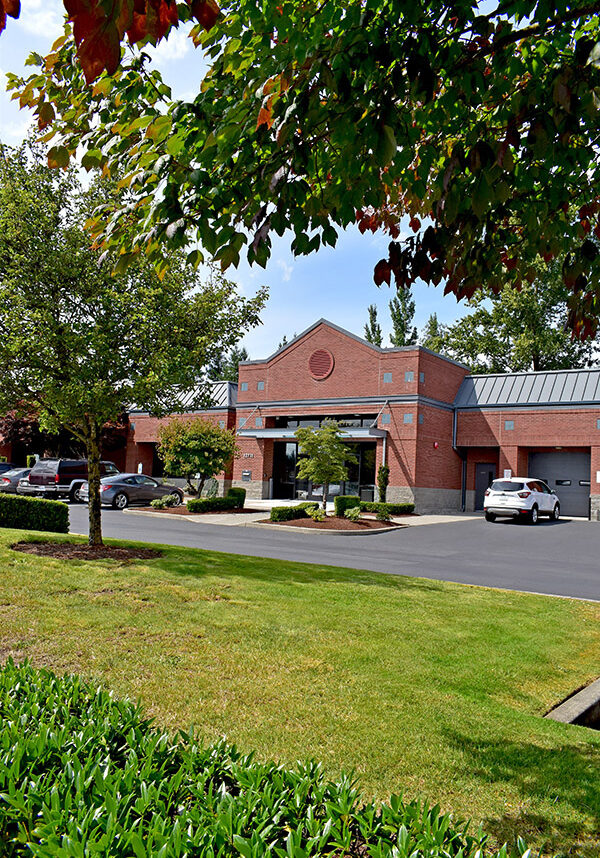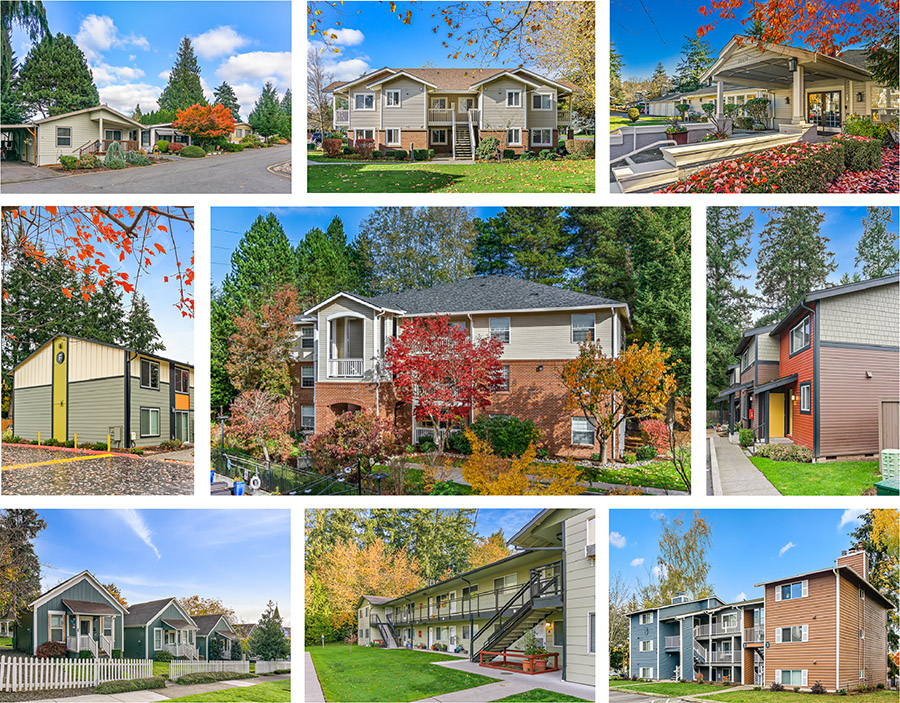Facing the Future
Home » About HASCO »
No Place in the Middle
Snohomish County faces a shortage of housing for people working at middle and low wage jobs and for those retired from the workforce.
The federal government programs that HASCO administers were designed to meet the needs of people whose circumstances make earning a living wage near impossible. Subsidized housing options for seniors and people with disabilities on fixed incomes. Temporary support for people working to rise above poverty.
Snohomish County’s housing crisis goes beyond what these programs envisioned and address. There’s a widening gap between what it costs to rent or own a home and the earnings of people doing the essential work that fuels our local economy.
HASCO believes our community’s economic health and long-term viability depend on creating enough housing for people at every stage of life.
- Unmarried individuals early in their careers
- Young families
- Mid-career skilled and unskilled workers
- Senior citizens who require smaller homes and easy access to services
Because housing is in short supply what’s available is expensive. This reduces the spending power of our middle earners—to the extent that many people who traditionally qualified to buy a starter home are unable to do so.
Is our region’s approach to housing putting home ownership out of reach for a large section of our community? HASCO’s research concludes the answer is “YES!”

Affordable Housing Defined
HASCO defines “affordable housing” as a residence of any type that is within financial reach of people with average and below-average incomes. Typically, a livable budget includes housing that costs 30% or less than total household income after taxes.
Housing affordability cannot be defined in exact dollar amounts because average income goes up and down, and average rent and home prices go up and down based on a combination of factors.
- Job availability and wages
- The amount of housing available
- Mortgage interest rates and the cost of building
- The number of people looking for housing, including those that move here for jobs
- The cost of necessities like health care, health insurance and transportation
HASCO tracks affordability over time by comparing average annual income and home price trends (including single family houses, rental units and apartments).

Housing Trends
Snohomish County is a great place to live! We’ve grown quickly and the amount of housing available for everyone living here hasn’t kept up.

It takes a surprisingly high income to rent an apartment or buy a home in Snohomish County. Here’s a snapshot of average housing costs relative to average incomes. You pay a higher percentage of earnings for housing today compared to the early 2000s.
Housing Costs Relative to Income
While median household income has remained fairly flat, the cost of renting and purchasing a home has increased dramatically. Median household income is the amount that separates the top and bottom halves of Snohomish County household earnings.
% Change in Rent, Home Price, Income, from 2000 to 2020.

All figures are adjusted for inflation.

Good Jobs Fall Short
What does a housing shortage + ever-increasing costs to get into a home add up to? Challenges for people earning average incomes!
Many of the jobs that used to buy an entry level house—or cover rent for an apartment to live in while saving for a house—don’t pay enough for either of those things in our current times.
See what kind of housing is considered affordable for people in a range of skilled jobs, like Nursing Assistants, Pharmacy Techs and Automotive Service Techs.

Answers Within Reach
Solving Snohomish County’s housing shortage—particularly for residents with income that is lower than the current average—will take a multi-systems approach.
- More housing, in sizes and shapes for people at all life stages
- Transit options that efficiently move people to jobs and activities
- Zoning that creates job and housing centers near transit hubs
- Wages that keep pace with inflation and work value
HASCO will continue to do our part, working with municipalities and other organizations to address local issues impacting housing availability and affordability.
We call on all citizens to take notice of Snohomish County’s missing middle housing. Your support is needed to preserve the options we have for our essential workforce—and for creating room for new and different possibilities to keep our neighbors close. What can you do?
- Attend town meetings where housing is on the agenda. Listen and add your voice to those who want to preserve a place for hard working people in your community.
- Discuss the issue(s) with friends, family and coworkers—be a voice for change with people you know personally.
- Vote for local representatives who see our communities’ need and are willing to collaborate on solutions.


